May 5, 2025 | 14:34 GMT +7
May 5, 2025 | 14:34 GMT +7
Hotline: 0913.378.918
May 5, 2025 | 14:34 GMT +7
Hotline: 0913.378.918
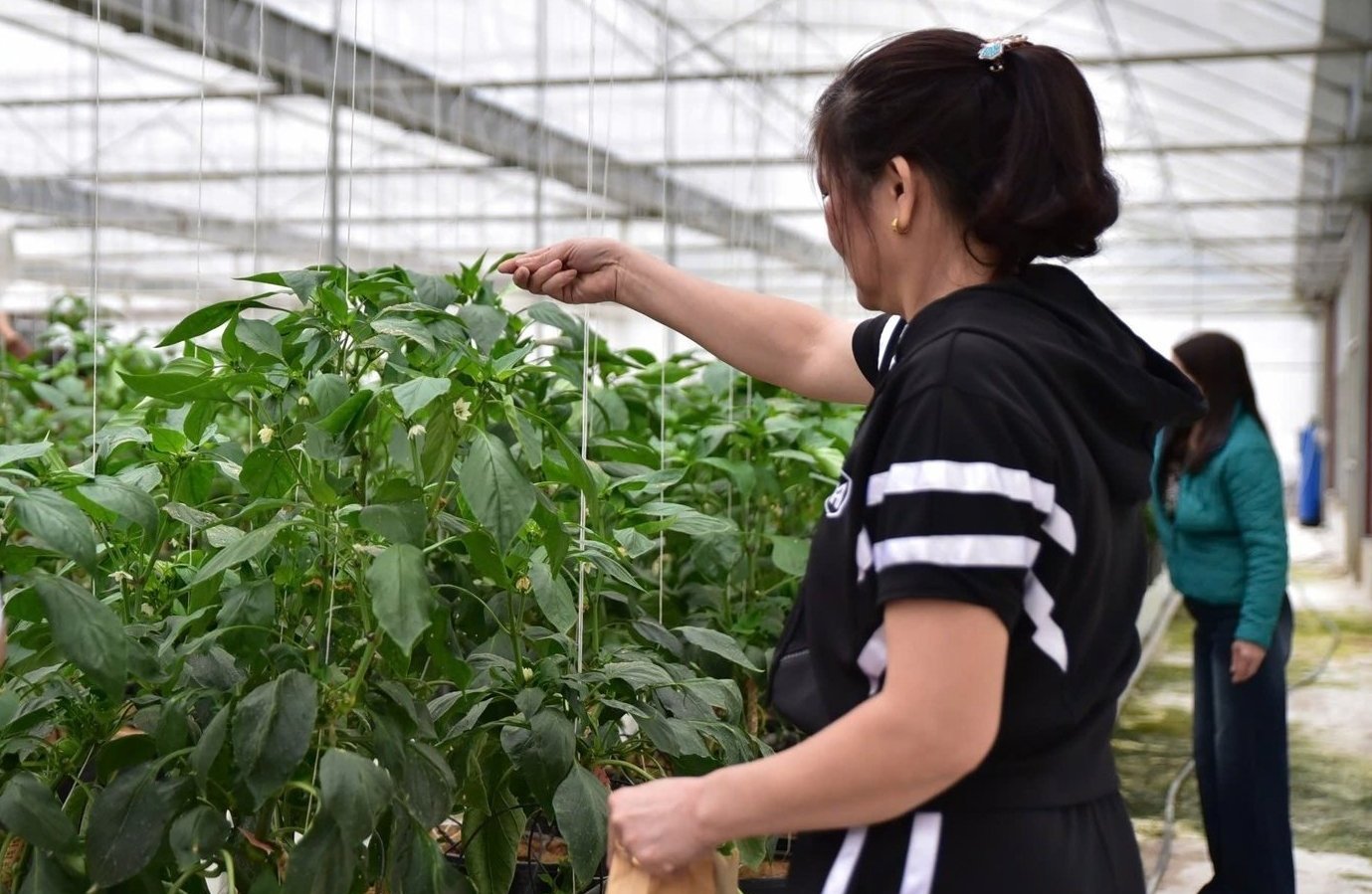
Farmers practice sprinkling predatory mites mixed with wheat bran onto sweet pepper leaves to eliminate harmful insects and mites. Photo: Kieu Chi.
At a soilless vegetable production greenhouse model in Moc Chau district, nearly 60 local farmers, nursery owners, agri-businesses, and agricultural extension officers were trained to identify and apply the method of releasing natural enemies to control pests on sweet peppers and melons.
This initiative is part of the “Smart Farming for the Future Generation” project, funded by the Korean Government jointly implemented by the Food and Agriculture Organization of the United Nations (FAO) and the Fruit and Vegetable Research Institute (Ministry of Agriculture and Environment).
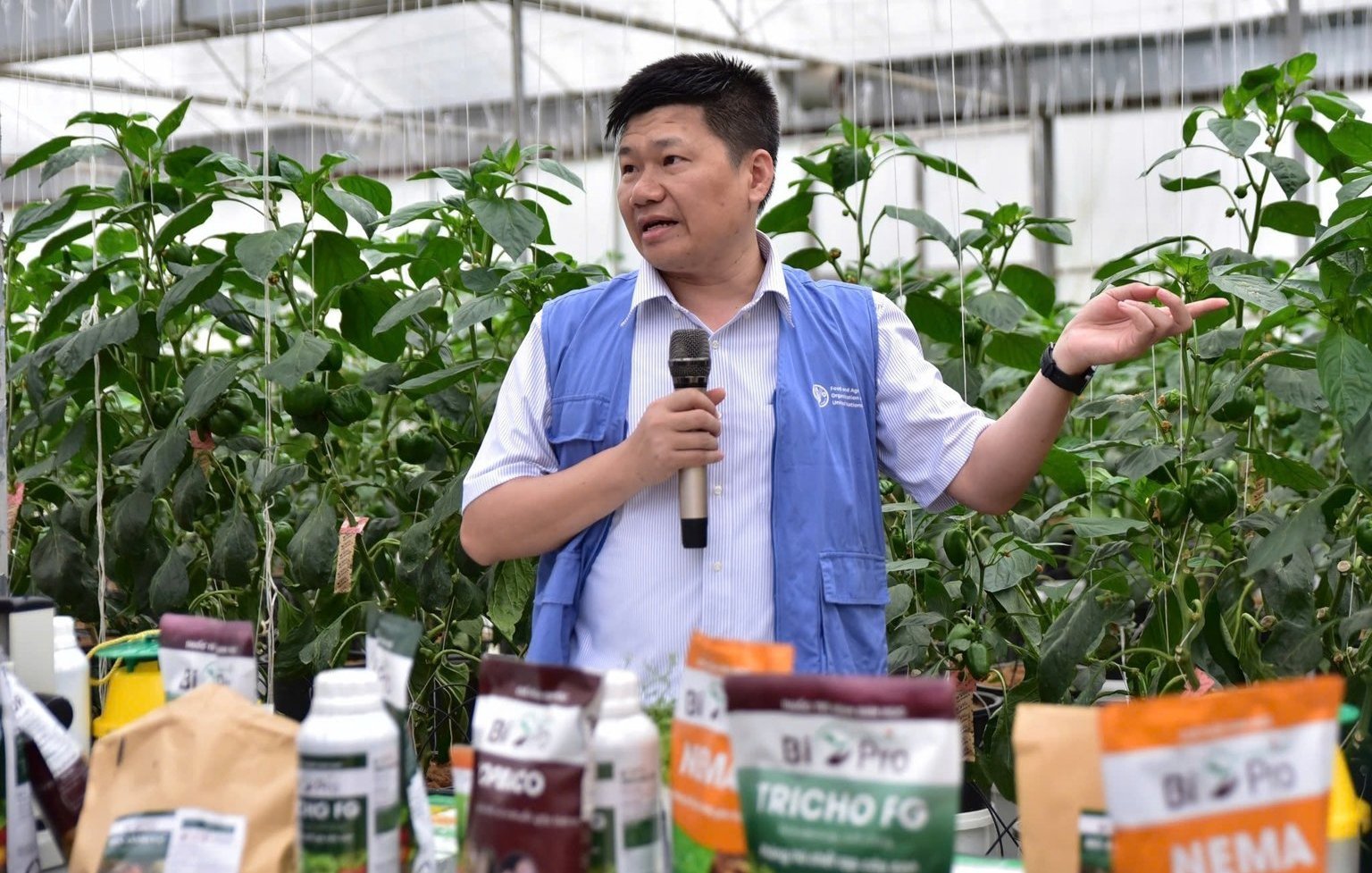
FAO expert in Vietnam introduced and guided Moc Chau farmers on using natural enemies to control harmful insects and mites affecting crops. Photo: Kieu Chi.
According to Dr. Nguyen Duc Tung, a FAO expert in Vietnam, said, "In nature, predatory spiders, predatory bugs, parasitic wasps, and ladybugs serve as effective and environmentally friendly solutions to control mites and harmful insects, while ensuring the safety of human health."
These biological control agents help regulate common pests such as thrips, white flies, aphids, and red spider mites - species that often damage high-value crops like sweet peppers, tomatoes, and lettuce. Since natural enemies feed on pests rather than plants, their release into greenhouses poses no threat to crops and instead contributes to efficient pest management.
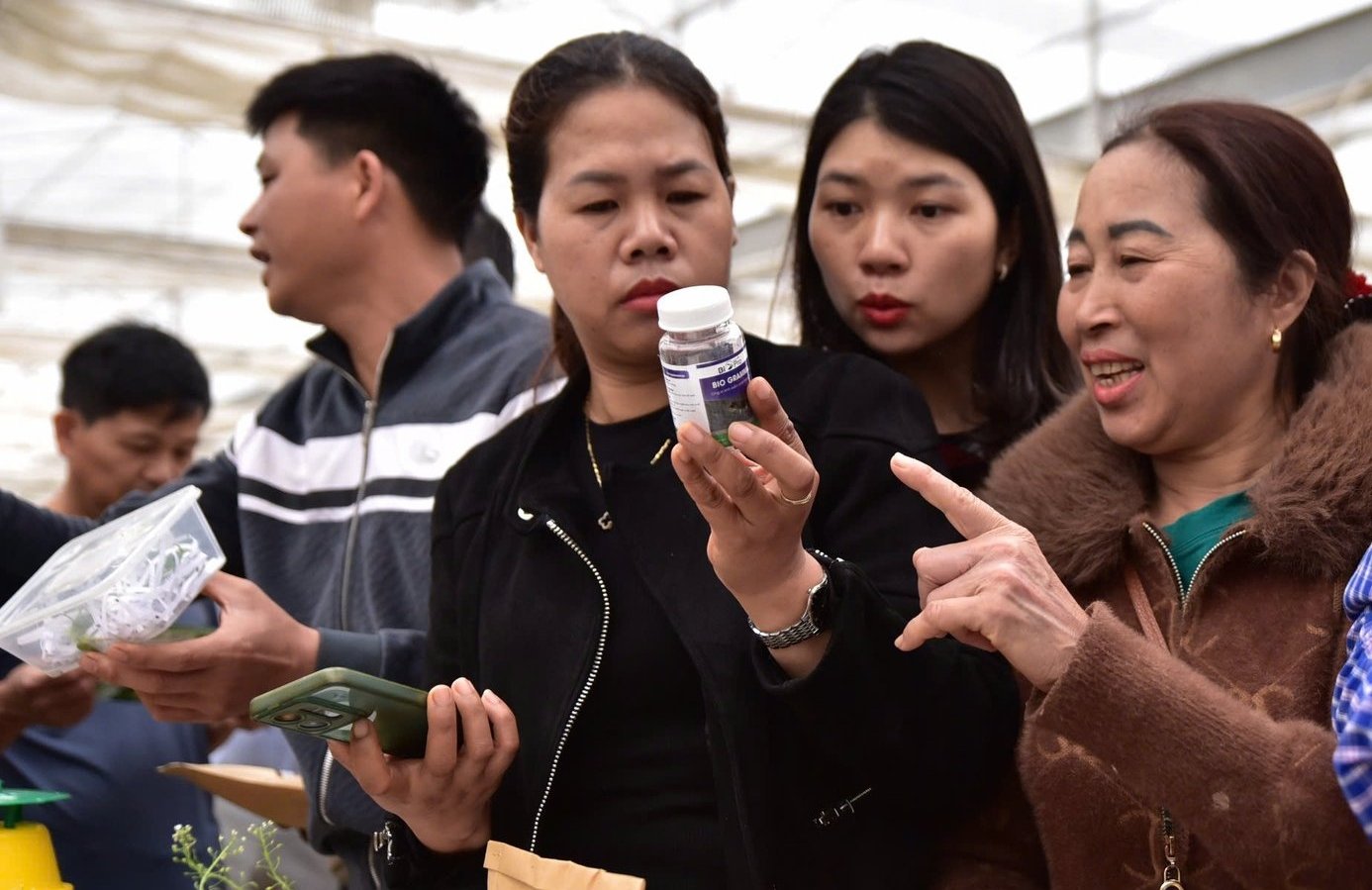
Farmers in Son La province were eager to learn about natural enemies to apply them in agricultural production. Photo: Kieu Chi.
Farmers participating in the project expressed excitement upon observing the diversity of natural enemies firsthand. Many shared a desire for continued technical support and expert guidance to ensure proper application and dosage of the methods.
Mrs. Dinh Thi Thap, a farmer from Van Son ward, shared that she had not previously used natural enemies in her tomato greenhouse. She visited the project’s production model to learn more about the benefits of such methods. Her 700-square-meter tomato greenhouse had been struggling with whiteflies - a pest notoriously hard to eliminate using biological pesticides due to their tendency to fly away and return. Each growing season, she typically uses four to five tanks of plant protection chemicals. If an effective alternative is available, she said, she would be willing to adopt it to safeguard both her health and her crops.
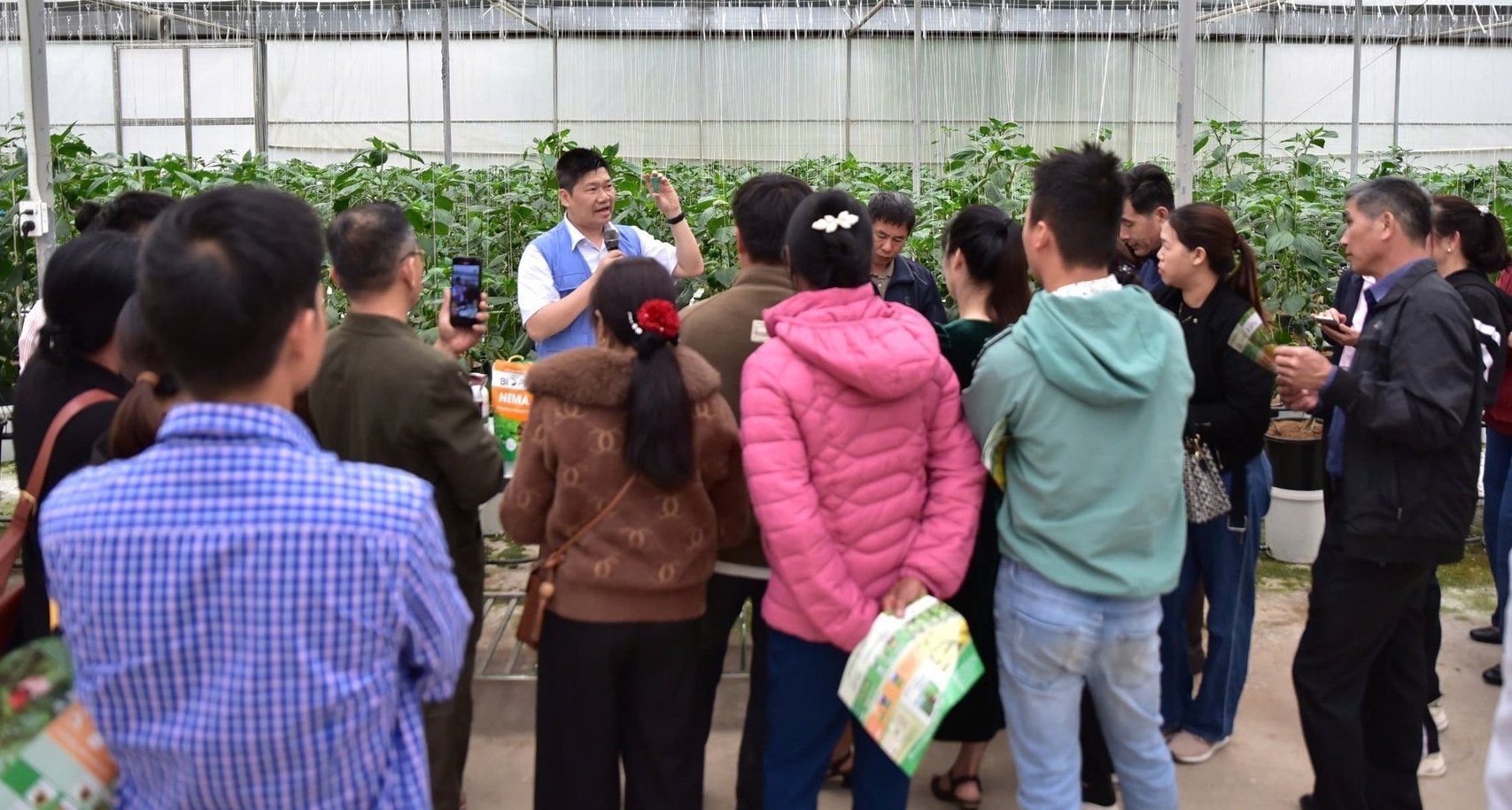
A large number of Moc Chau farmers attentively listened to the expert explaining and guiding them on the use of natural enemies to control crop pests. Photo: Kieu Chi.
Dr. Tung explained two common methods for using predatory mites: direct application and hanging release sachets. In the direct method, predatory mites are mixed with wheat bran and sprinkled evenly on the leaves. The mites then disperse throughout the plant in search of pest mites to consume. This technique is often used when there is a high pest population over a large area.
A sachet of predatory mites is hung on a sweet pepper plant to eliminate white mites, the cause of leaf curling in sweet peppers.
In the hanging sachet method, predatory mites are placed in small sachets containing a growth medium and food, with about 250 mites per sachet. Once hung on the plants, the mites gradually exit the sachets and crawl into leaf crevices to hunt pests, especially thrips. These sachets are typically installed at the beginning of the crop cycle, even before pests appear, creating a “defensive force” ready to act inside the greenhouse.
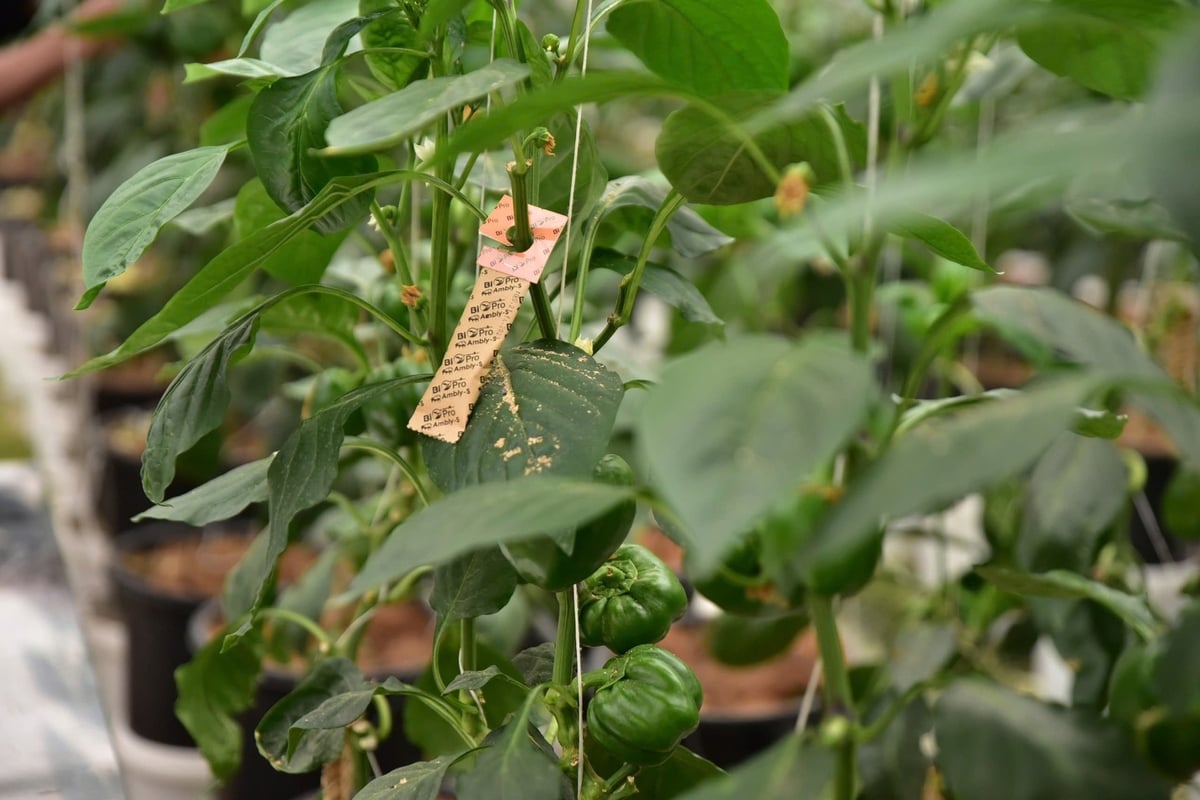
Sweet peppers grown in greenhouses are often affected by certain pests, which can be effectively controlled using natural enemies. Photo: Kieu Chi.
Predatory mites reproduce rapidly, with life cycles lasting 7 to 10 days. If properly managed and not harmed by pesticides, their population can multiply quickly and maintain effective pest control throughout the season.
Banker plants are introduced into the greenhouse to sustain populations of natural enemies when pest pressure is low. These plants provide additional pollen and nectar as food sources. Natural enemies like predatory mites, bugs, and parasitic wasps can thrive on these support plants, ensuring continued presence and readiness.
Dr. Tung noted that these beneficial insects are already being bred in Vietnam and are well adapted to local climatic conditions. Furthermore, the stable environment inside greenhouses, absent rain, wind, and higher-level predators or parasites, further supports the development of natural enemies.
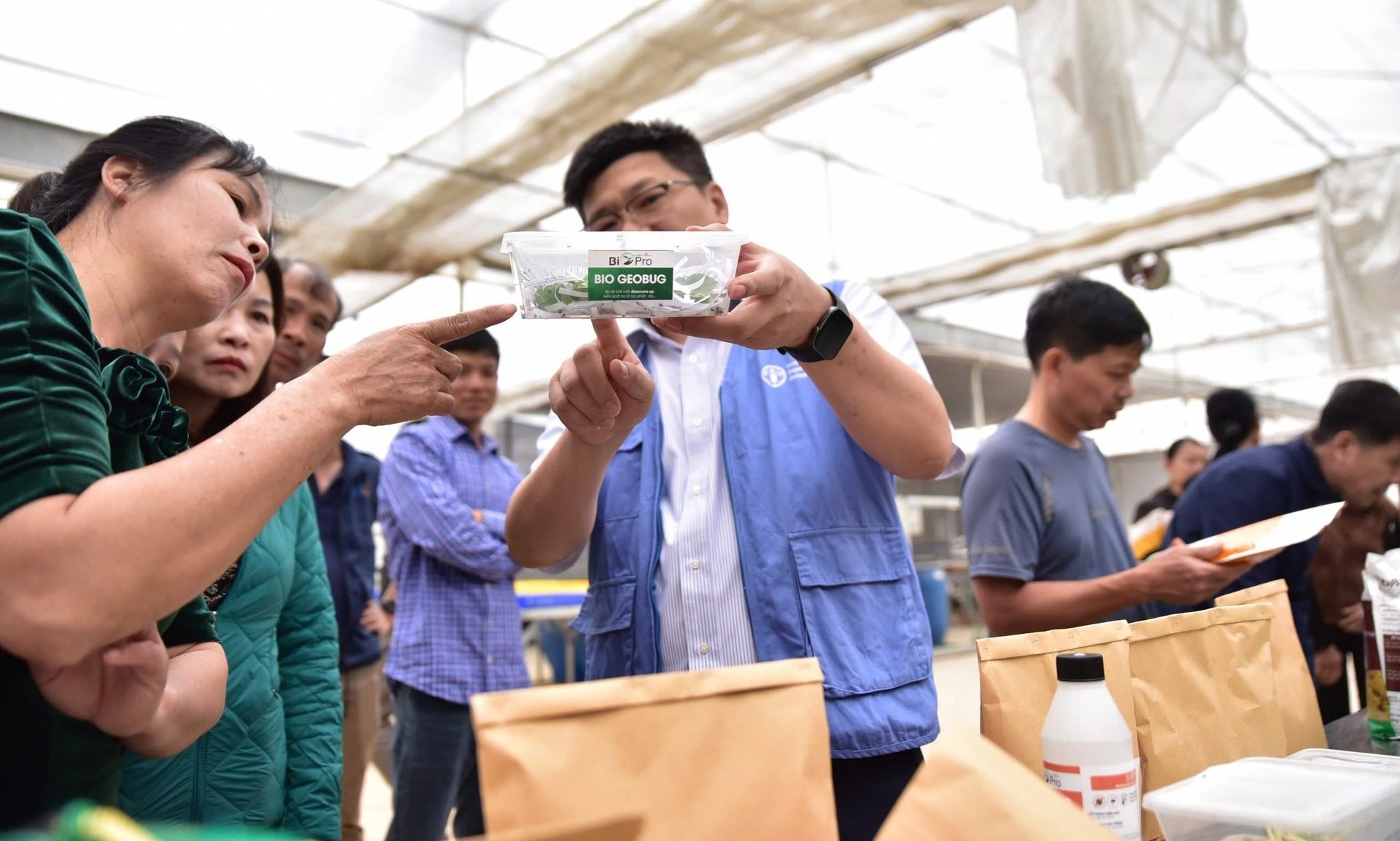
FAO expert in Vietnam introduced several species of natural enemies that effectively eliminate harmful insects and mites. Photo: Kieu Chi.
After being released, natural enemies like parasitic wasps move around the greenhouse to locate pest eggs. They lay their eggs inside the pest eggs, killing the larvae before they even hatch, providing early-stage pest control.
FAO expert in Vietnam emphasized that, unlike chemical pesticides, which require constant monitoring and frequent spraying due to pest resistance and quick resurgence, natural enemies offer a more stable, sustainable, and less labor-intensive pest management solution.
Predatory bugs (Pentatomidae family) are larger predatory insects that specialize in attacking lepidopteran larvae such as the armyworm. They paralyze their prey with a toxin before feeding, ultimately killing it. These do not require sprinkling or hanging methods. Farmers can simply release them directly into the field, where they will roam freely and actively control pest populations.
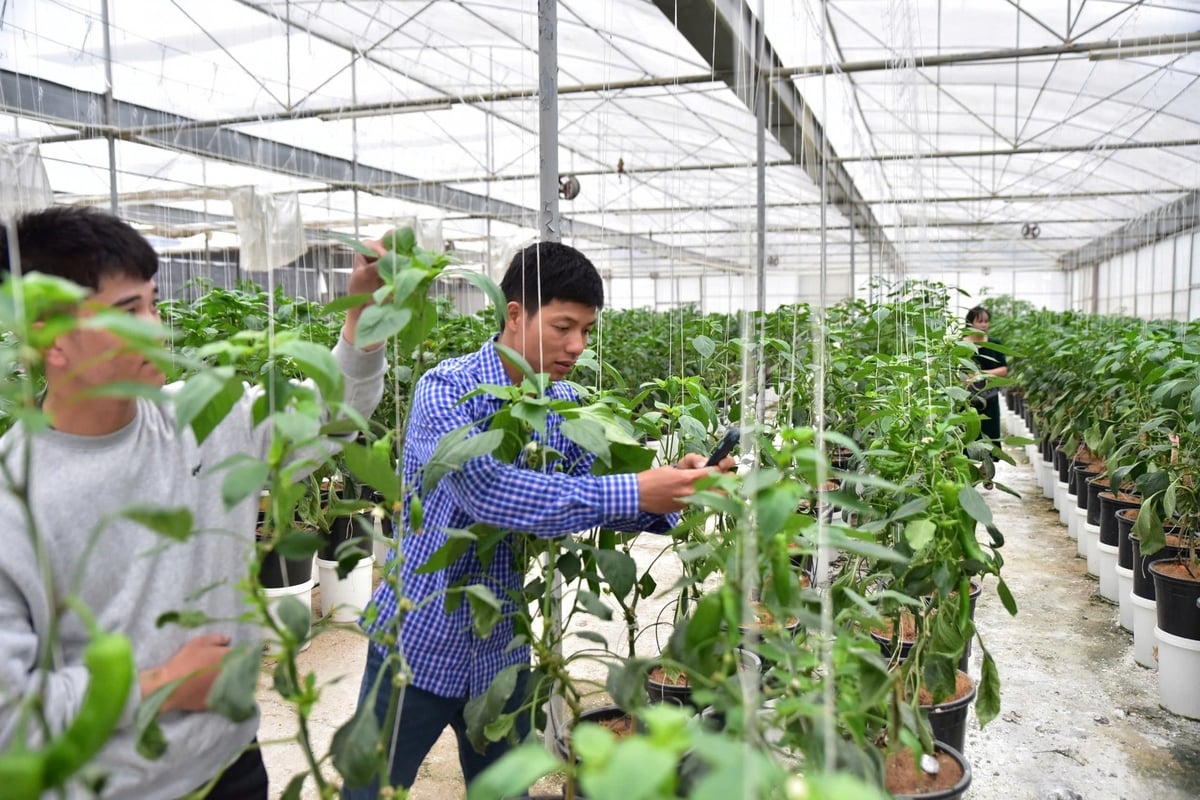
Son La province is encouraging pioneering farmers to adopt biological measures to control crop pests, aiming to promote sustainable agriculture development. Photo: Kieu Chi.
Following a recommendation from the Fruit and Vegetable Research Institute, the use of natural enemies has been selected to be pilot as an alternative approach to managing pests in greenhouse vegetable production.
Son La province is actively shifting toward environmentally friendly agricultural practices and encouraging farmers to take the lead in adopting this biological approach. With increasing market demands, the province aims to develop sustainable production, enabling its fruit and vegetable sector to meet export standards in the near future.
Translated by Kieu Chi
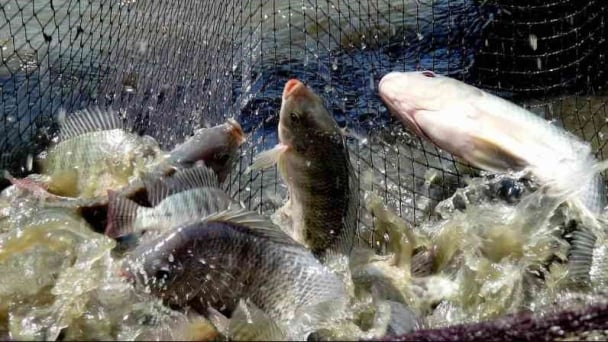
(VAN) Mr. Tran Dinh Luan said that tilapia is entering a favorable phase, opening up opportunities to develop a value chain and increase seafood export value.
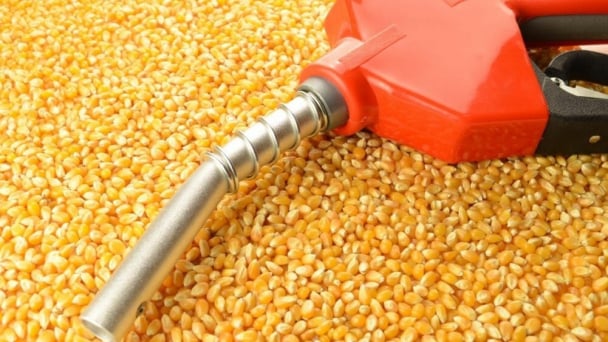
(VAN) More African countries have mandated the implementation of policies backing the blending of ethanol in gasoline as the continent invests in projects promoting new industrial uses for locally produced grains.
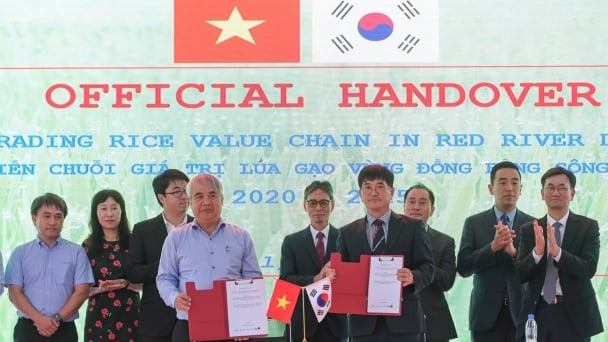
(VAN) On 28 April, Korea officially transferred the Upgrading Rice Value Chain in Red River Delta project to Vietnam, marking five years of successful cooperation in agricultural development between the two countries.

(VAN) Dr. Bui Ba Bong affirmed that the 1 million hectares of high-quality, low-emission rice project aims at increasing farmers' income.
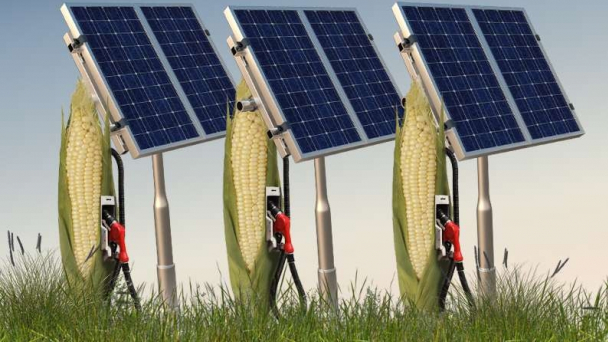
(VAN) In fact, it would require about 31 hectares of corn ethanol to produce the same amount of energy generated by one hectare of land covered in solar panels.
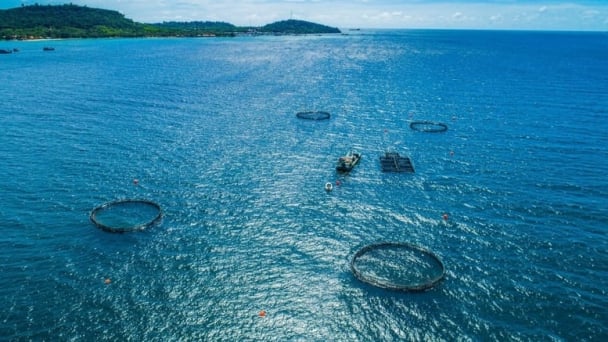
(VAN) Vietnam aims to effectively implement marine biodiversity conservation initiatives and the Fisheries Strategy, thereby improving the livelihoods of coastal communities and fishermen.